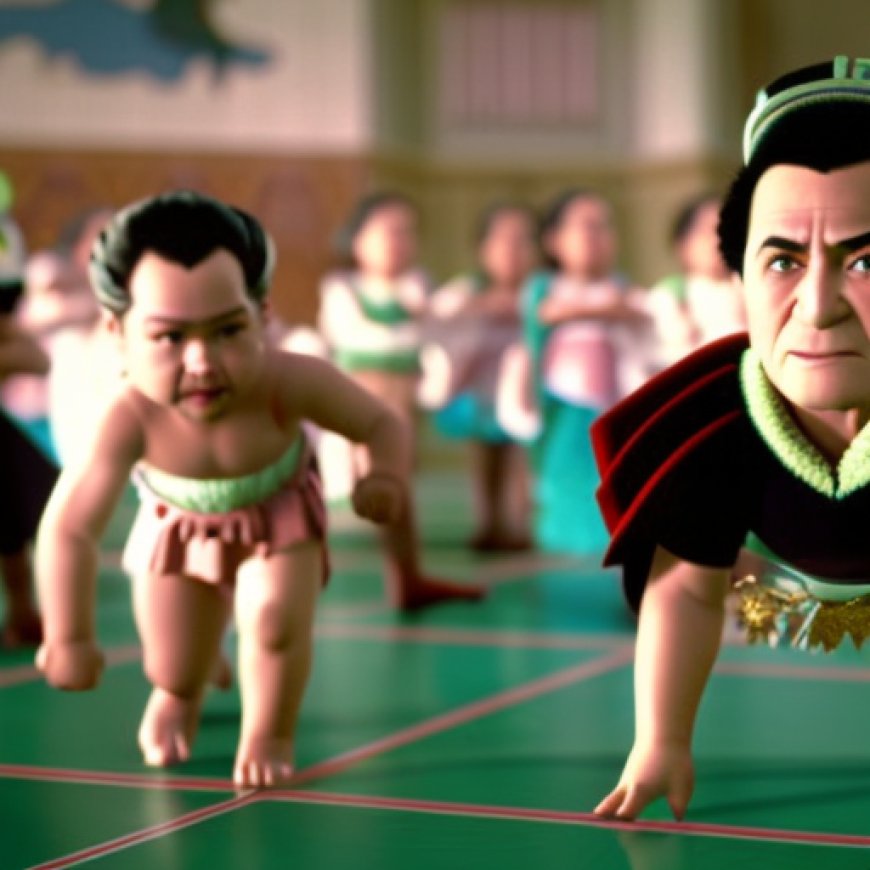Kōwhiti Whakapae: A new early learning curriculum resource
Kōwhiti Whakapae: A new early learning curriculum resource Ministry of Education


Sustainable Development Goals (SDGs) and Kōwhiti Whakapae
Introduction
Kōwhiti Whakapae is a resource that supports educators in weaving the principles of Te Whāriki, the early childhood curriculum, into their teaching practices. It focuses on three areas of learning: social and emotional well-being, language and literacy, and mathematics.
Visual Representations
The resource includes various visual representations of woven flax strands that depict different aspects of teaching and learning. These representations serve as examples for educators to follow and guide their practice.
Supporting Cultural Identity
Kōwhiti Whakapae is designed to align with the principles of Te Tiriti o Waitangi, the Treaty of Waitangi, Te Whāriki, the early childhood curriculum, cultural responsiveness, and the recognition of identity, language, and culture.
Guiding Teaching and Assessment
The resource provides a framework and assessment tools for educators to plan and evaluate their teaching practices in the three areas of learning: social and emotional well-being, language and literacy, and mathematics.
Empowering Students
Kōwhiti Whakapae supports students in recognizing and understanding their own abilities.
Enhancing Learning Journeys
The resource encourages educators to acknowledge and celebrate each child’s educational journey.
Developing Skills
Kōwhiti Whakapae helps educators develop their own skills and integrate them into their teaching practices.
Supporting Every Child
The resource provides examples that reflect the diversity of families and educators, ensuring inclusivity in teaching practices.
Encouraging Exploration
Kōwhiti Whakapae allows for exploration of different learning environments for all students.
Strengthening Cultural Connections
The resource includes visual representations that reflect the cultural backgrounds of students and their families.
Building Confidence
Kōwhiti Whakapae supports educators in building their confidence to implement effective teaching strategies.
Recognizing Achievements
The resource acknowledges and celebrates the educational journeys of each child.
Continual Growth
Kōwhiti Whakapae encourages ongoing professional development and continuous improvement in teaching practices.
Conclusion
Kōwhiti Whakapae is a valuable resource that can support educators in providing quality early childhood education aligned with the Sustainable Development Goals. It promotes holistic development and empowers children to thrive in their learning journeys.
SDGs, Targets, and Indicators
-
SDG 4: Quality Education
- Target 4.1: By 2030, ensure that all girls and boys complete free, equitable, and quality primary and secondary education leading to relevant and effective learning outcomes.
- Target 4.2: By 2030, ensure that all girls and boys have access to quality early childhood development, care, and pre-primary education so that they are ready for primary education.
- Indicator 4.1.1: Proportion of children and young people (a) in grades 2/3; (b) at the end of primary; and (c) at the end of lower secondary achieving at least a minimum proficiency level in (i) reading and (ii) mathematics, by sex.
- Indicator 4.2.1: Proportion of children under 5 years of age who are developmentally on track in health, learning, and psychosocial well-being, by sex.
-
SDG 5: Gender Equality
- Target 5.1: End all forms of discrimination against all women and girls everywhere.
- Target 5.2: Eliminate all forms of violence against all women and girls in the public and private spheres, including trafficking and sexual and other types of exploitation.
- Indicator 5.1.1: Whether or not legal frameworks are in place to promote, enforce, and monitor equality and non-discrimination on the basis of sex.
- Indicator 5.2.1: Proportion of ever-partnered women and girls aged 15 years and older subjected to physical, sexual, or psychological violence by a current or former intimate partner in the previous 12 months, by form of violence and by age group.
-
SDG 10: Reduced Inequalities
- Target 10.2: By 2030, empower and promote the social, economic, and political inclusion of all, irrespective of age, sex, disability, race, ethnicity, origin, religion, or economic or other status.
- Indicator 10.2.1: Proportion of people living below 50 percent of median income, by sex, age, and persons with disabilities.
Table: SDGs, Targets, and Indicators
| SDGs | Targets | Indicators |
|---|---|---|
| SDG 4: Quality Education |
|
|
| SDG 5: Gender Equality |
|
|
| SDG 10: Reduced Inequalities |
|
|
Analysis
The article discusses various issues related to education and equality. Based on the content of the article, the following SDGs, targets, and indicators can be identified:
1. SDG 4: Quality Education
The article highlights the importance of quality education and early childhood development. It emphasizes the need for all children to have access to equitable and effective learning opportunities. The targets under this SDG that can be identified are:
- Target 4.1: By 2030, ensure that all girls and boys complete free, equitable, and quality primary and secondary education leading to relevant and effective learning outcomes.
- Target 4.2: By 2030, ensure that all girls and boys have access to quality early childhood development, care, and pre-primary education so that they are ready for primary education.
The indicators mentioned in the article that can be used to measure progress towards these targets are:
- Indicator
Copyright: Dive into this article, curated with care by SDG Investors Inc. Our advanced AI technology searches through vast amounts of data to spotlight how we are all moving forward with the Sustainable Development Goals. While we own the rights to this content, we invite you to share it to help spread knowledge and spark action on the SDGs.
Fuente: education.govt.nz

Join us, as fellow seekers of change, on a transformative journey at https://sdgtalks.ai/welcome, where you can become a member and actively contribute to shaping a brighter future.







